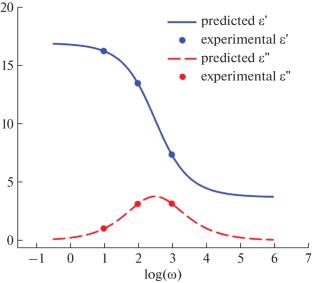阻抗谱法在乳腺肿瘤检测中的Havriliak-Negami模型反问题求解
IF 0.9
4区 物理与天体物理
Q4 PHYSICS, APPLIED
引用次数: 0
摘要
为了确定非均匀介质物体的结构,在确定参数和分析相对介电常数的频率特性的基础上,考虑了Havriliak-Negami模型中计算系数的反问题。本文应用了一种计算Havriliak-Negami模型系数的方法,该方法使用了在不同频率下对复介电常数的三次测量。本文提出了一种确定Havriliak-Negami模型系数的数值方法,该模型用于电介质光谱中乳腺肿瘤的早期检测。本文章由计算机程序翻译,如有差异,请以英文原文为准。

Solving the Inverse Problem for the Havriliak–Negami Model in the Detection of Breast Tumors by Impedance Spectroscopy
The inverse problem of calculating coefficients in the Havriliak–Negami model has been considered in order to determine the structure of an inhomogeneous dielectric object on the basis of determining the parameters and analyzing the frequency characteristics of the relative permittivity. A method for calculating coefficients in the Havriliak–Negami model using three measurements of the complex permittivity at various frequencies has been applied. A numerical method has been developed to determine the coefficients in the Havriliak–Negami model, which is used in dielectric spectroscopy for early detection of tumors in the mammary gland.
求助全文
通过发布文献求助,成功后即可免费获取论文全文。
去求助
来源期刊

Technical Physics Letters
物理-物理:应用
CiteScore
1.50
自引率
0.00%
发文量
44
审稿时长
2-4 weeks
期刊介绍:
Technical Physics Letters is a companion journal to Technical Physics and offers rapid publication of developments in theoretical and experimental physics with potential technological applications. Recent emphasis has included many papers on gas lasers and on lasing in semiconductors, as well as many reports on high Tc superconductivity. The excellent coverage of plasma physics seen in the parent journal, Technical Physics, is also present here with quick communication of developments in theoretical and experimental work in all fields with probable technical applications. Topics covered are basic and applied physics; plasma physics; solid state physics; physical electronics; accelerators; microwave electron devices; holography.
 求助内容:
求助内容: 应助结果提醒方式:
应助结果提醒方式:


